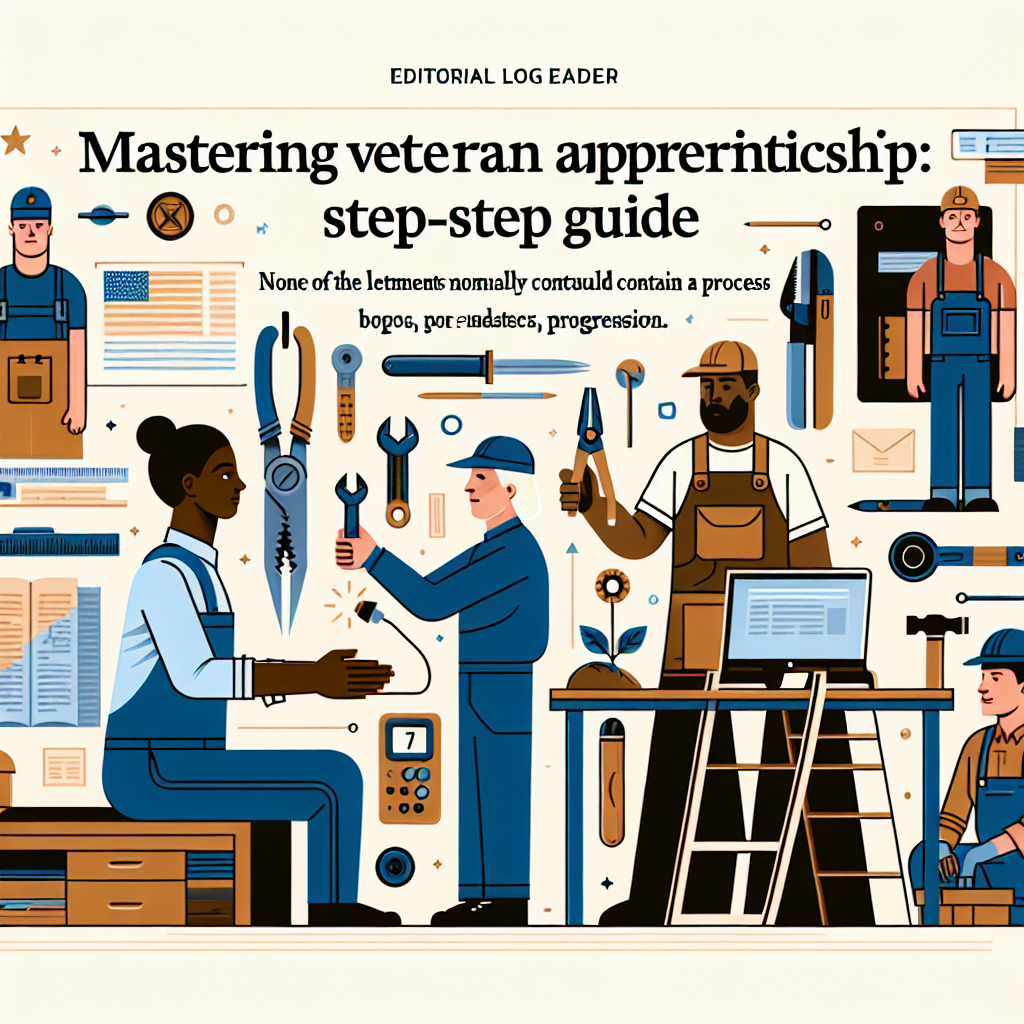Jumping from military service to civilian work can feel like learning a new language — but it’s entirely manageable with a clear plan. Mastering Veteran Apprenticeship: Step-By-Step Guide lays out practical, actionable steps that help former service members translate skills, connect with employers, and complete apprenticeships that lead to solid careers. This article walks through preparation, application, training, and completion phases so you can move from interest to employment with confidence.
Why apprenticeships work for veterans
Apprenticeships blend on-the-job training with classroom instruction, mirroring the structured learning many veterans experienced in the military. They offer paid entry into skilled trades, technology, healthcare, and more, while providing mentorship, credentialing, and a clear career ladder. For veterans, apprenticeships can leverage discipline, teamwork, and leadership experience into recognized civilian qualifications.
Preparing to apply: translate military experience to civilian credentials
Start by documenting your military occupational specialty (MOS), training records, and any certifications. Convert military jargon into civilian-friendly language that highlights transferable skills: project management, safety compliance, technical troubleshooting, and leadership. Seek a credentials evaluation if you trained in technical fields; credentials can sometimes shorten apprenticeship timelines.
Action steps
- Request and organize service records, training transcripts, and certificates.
- Create a civilian resume emphasizing accomplishments and measurable outcomes.
- Obtain letters of recommendation from supervisors and trainers.
A step-by-step approach to veteran apprenticeships
Follow these stages to move from searching to starting and finishing an apprenticeship.
1. Research and target programs
Identify apprenticeships in industries that match your interests and skills. Use employer and union directories, state apprenticeship agencies, and veterans’ employment programs. Check program length, credentialing, pay progression, and post-apprenticeship job placement rates.
2. Reach out and network
Contact program coordinators, attend recruiter events, and leverage veteran-focused hiring fairs. Networking with current apprentices and alumni provides realistic expectations and insider tips on application cycles and interview questions.
3. Apply and interview
Tailor each application to the program’s core requirements. In interviews, emphasize adaptability, accountability, and hands-on experience. Be ready to discuss how your military training aligns with the apprenticeship tasks.
4. Use veteran supports during training
Tap into GI Bill benefits, Vocational Rehabilitation, and state veteran employment services to cover tuition, transportation, and tools. Many programs offer flexible scheduling or on-the-job accommodations to ease the transition.
5. Complete the apprenticeship and document achievements
Track hours, competencies, and coursework completion. Request transcripts or certificates immediately upon finishing milestones — these credentials are valuable during job searches and for future promotions.
Common challenges and how to overcome them
Adapting to a civilian workplace culture, handling family logistics, and managing expectations about pay and role can be difficult. Address these proactively: seek mentorship, negotiate flexible arrangements when possible, and set realistic timelines for advancement.
Programs that pair veterans with veteran mentors or offer cohort-based learning often improve retention and completion rates. If you’re exploring other career transition resources, consider reading guidance on starting fresh new career paths for women at 50 for inspiration on structured career pivots and reskilling strategies.
For reliable data on apprenticeship structures, outcomes, and policy context, consult trusted labor statistics and program overviews such as the U.S. Bureau of Labor Statistics apprenticeship information.
Quick checklist
- Gather military training and service records
- Translate skills into civilian terms on your resume
- Research programs and talk to coordinators
- Apply, interview, and negotiate supports
- Track competencies and collect credentials
FAQ
Can military experience shorten an apprenticeship?
Yes. Many apprenticeship programs award credit for relevant prior learning and experience. Provide detailed documentation and request an assessment to potentially reduce required hours or coursework.
Are apprenticeships paid, and can veterans use GI Bill benefits?
Most registered apprenticeships are paid and include progressive wage increases. Veterans may also combine wage earnings with education benefits like the GI Bill or vocational rehabilitation for related classroom components.
How long does it take to complete an apprenticeship?
Completion times vary by occupation and program level, typically ranging from one to six years. Technical trades often require several thousand on-the-job hours plus classroom hours; credential pathways and prior experience can shorten this period.
With planning, documentation, and the right supports, transitioning veterans can turn apprenticeships into long-term careers. Treat the process as a series of manageable steps and use available veteran resources to accelerate success.



